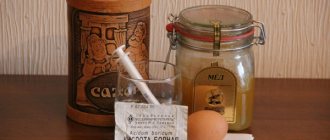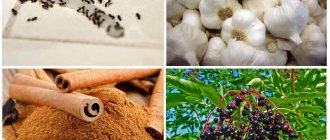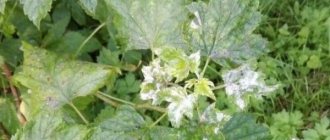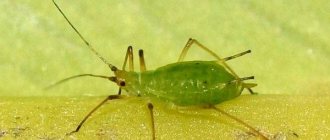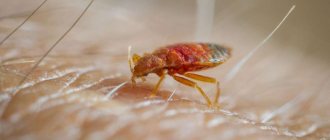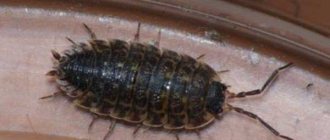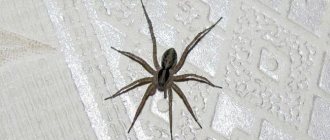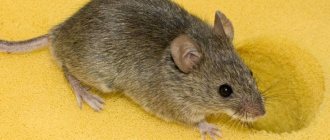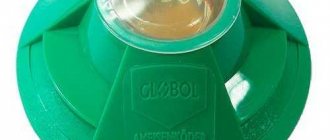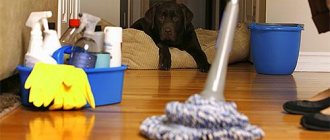10.01.2017
People have long admired the hard work and tenacity of ants and treated them with respect. But only until these little terrorists decide to settle in a person’s house. To get rid of them, you should understand what attracts ants to residential buildings, and what you need to do if you find them on your territory.
- Why are house ants dangerous for humans?
- The main types of ants settling in houses
- Reasons for the appearance of ants in private homes
- How to get rid of ants using chemical means
- How to get rid of ants using folk remedies
- Lifehack
Where do ants come from in a private house?
The appearance of ants in a private home is not uncommon. Most often, insects enter the home:
- Looking for warmth or food. When cold weather sets in, ants look for warmer places to live. The smell of food always attracts them, especially if there is food in the open in the house or the cleaning is not done on time.
- With seedlings, indoor plants or even purchased soil.
- Along with fruits and vegetables brought from the garden.
- Due to the sanitary treatment carried out by the neighbors against ants.
Ants are able to travel vast distances in search of comfortable living conditions. Usually, several individuals are the first to go on reconnaissance, and if the found living conditions suit them, the entire colony moves into the house.
Why are house ants dangerous for humans?
Ants that have settled in a house cause a lot of trouble for the people who live in it. Multiplying insects can be found at every step: on the table, in the bread bin, in a jar of sugar, and even in still-sealed bags of kefir or yogurt.
Ants not only spoil food, but are also carriers of dangerous diseases. An insect that has been in a trash can or toilet can bring dysentery, typhoid fever, cholera, diphtheria, and worm eggs into the house.
Therefore, having discovered such neighbors near you, it is better to immediately find where the ant house is located and destroy it without regret. If you cannot find the nest, then you should look for an effective remedy for ants in the house, with which you can drive uninvited guests out of the house.
What types of ants are there?
In our country, more than 260 species of ants are found in nature, but not all of them can adapt to living next to people. Mostly, those families of insects that cannot withstand cold and frost live in private houses. These include:
- Red or pharaoh ants are also popularly known as “house ants”, as they most often appear in the vicinity of humans. Insects are small in size, workers reach 2-2.5 mm, and queens from 4 to 6 mm. They die in cold conditions, so they settle only in heated places.
- Yellow, brown or thief ants. Often appear in private homes. Working individuals are very small, from 1 to 3 mm, the body is colored bright yellow or light brown. Due to their small size, they build compact nests in hard-to-reach places, such as cracks.
- Red or turf. Like the previous species, individuals are very small. The body of the insect can be black or dark red. They choose cracks and cracks as places to live.
- Big black ants. Their anthill may be located not in the house, but, for example, on a personal plot, while working individuals can be noticed by you in the living room, as they are able to travel long distances in search of food.
- Carpenter ants. Large black insects that usually live in forests. Nevertheless, their appearance in the house is possible, especially if it is made of wood.
Also, in the house, along with ordinary ants, flying individuals may appear.
Where do flying individuals come from?
The statement that flying ants are a separate species is erroneous. These are still the same genus of insects. Wings grow in those individuals that are in the mating phase. Most often this occurs in suitable conditions for reproduction, in summer or warm spring. After mating, adult ants in most cases bite off their wings.
Description of ants
Houses made of wood are environmentally friendly; they are warm in winter and cool in summer.
But sometimes uninvited guests move in with the owners. And if rats or mice cause obvious harm, then carpenter ants at first glance may seem harmless. But actually it is not. Typically, representatives of this species live in the forest. They don't bother anyone there. But often these insects build their anthills near their homes. And it doesn’t matter what a person built his house from - brick, clay or concrete. Although most often ants settle and build their nests near wooden structures. They use wood as a building material for their house.
The red-breasted carpenter ant is quite large: the body length of males reaches 12 mm, and females are slightly larger - 15 mm. The body color is brown or black, the chest is red. The ant's body is divided into segments. The abdomen is oval, and the chest is thin, cubic in shape with smooth curves at the top. A pair of antennae, antennae and large jaws are visible on the head.
The danger and harm of ants in the house
Despite the fact that ants living in private houses are not poisonous, their appearance in a home is very unsafe. Ants are capable of:
- Cause various diseases in humans or pets. Working individuals, in search of food, crawl through garbage dumps and carry pathogens on their paws, which can subsequently infect humans.
- Set up your nests right in the walls or other inaccessible places, where they bring leftover food, which decomposes over time. As a result, your home may develop an unpleasant odor or develop mold and mildew.
- Damage food or even household appliances. Ants are always in search of food, so they try to drag any food into their nest. Of course, they will not be able to ingest large-sized products, but insects will definitely leave their marks on them, so they will no longer be able to be eaten.
Pests can also set up an anthill right in the body of a household appliance, which leads to its subsequent breakdown or even short circuit.
If you have carpenter ants in your wooden house, you should remove them as quickly as possible. The fact is that insects build anthills from wood, gnawing it from the inside. The first signs of their appearance in a wooden house will be the presence of dust or sawdust. In this case, small holes-movements will be visible in the wood itself. Woodworms typically live in walls, hollow doors, wood supports or beams. Ants also often build nests in damp wood.
As a result, a large number of mass passages made by ants accumulate, and the wood becomes loose. If the pest is not stopped in time, wooden beams and walls may fail and collapse.
Where to look for ants
- Woodworms settle in damp wood because it becomes soft when exposed to water. It is much easier to make holes in such material. Therefore, they are investigating the places where the sewer exits.
- Check existing door mats.
- They inspect the foundation and courtyards.
- They look for woodworms in the grass, lawns, and under bushes.
- Explore the area around young trees. It is usually covered with a thick layer of damp mulch or leaves in which ants like to live. To find them, rake the mulch and inspect the ground.
- Woodworms can live in compost heaps. Sometimes they settle in floors and in potted plants.
How to get rid of ants in your house forever
There are many ways to fight ants. You can use traditional methods or store-bought chemicals. In advanced cases, you can call a pest control service. Regardless of which method of extermination from insects you choose, there are general rules for preparing the premises before pestering, standards for disinfestation, as well as recommendations for taking precautions.
Scare or destruction
When choosing a product to combat ants, consider how the substance will act. Some chemicals and improvised means can only repel insects with a pungent odor that ants cannot tolerate; others affect the pest externally or enter the body along with the bait, which leads to its death. The first option is more humane, but guarantees the complete extermination of ants when regular preventive measures are carried out. In the second case, the likelihood of the appearance of new insects also occurs, but the risk of infection is reduced significantly.
Preparing for extermination
Before killing ants in any way, be thoroughly prepared.
- First of all, carry out general cleaning using a disinfectant.
- Remove all foods, especially sweets, from public access, and also try to limit insects' access to water.
- Seal any visible cracks in the walls.
- Start the fight by looking for an anthill in the house. This way you will know exactly where to place repellers or poisonous baits.
- If you decide to use aggressive agents for disinfestation or call an SES, take care of where family members and pets will be during treatment.
- When using harmful, corrosive or toxic substances, follow the prescribed precautions.
Features of fighting ants in a wooden house
If ants have settled in wood, follow the specifics of their extermination:
- Find the trash. Ants usually leave traces of their activity in the form of sawdust or light-colored dust.
- Look for damaged wood. Usually in such places you can distinguish many small holes.
- Locate the ants. Keep track of where the hunters will carry the food by placing some sugar, honey or jam in plain sight, near the intended nest.
If the nest is out of your reach, use a slow-acting poison. By using a means of instant action, you will achieve the destruction of only the getter ant. In your case, it is required that the worker ant deliver a poisonous “delicacy” to the nest, where over time the entire colony will be poisoned and die.
How to find a nest
How to get rid of carpenter ants? First you need to find their nest. To do this, you need to monitor the movement of insects along the paths they have designated. They will show traces of dust carried by large black ants. The woodworm lives in damp trees, lying posts, and boards, leaving noticeable winding passages on them. Near the nest, the amount of dust increases significantly.
You can also look for places on the tree where the wood is most damp. This is where carpenter ants like to place their nests. How to get rid of them?
Special chemicals to combat ants
Special chemicals are widely used in a number of ant control methods. Hardware stores always have a large assortment of substances with different spectrum of action and price categories.
Gels
The substance requires application to places where ants appear most often. The insect brings the poisonous agent on its legs and body to the nest, and subsequently infects the queen and the entire colony. From the start of using the drug until the population is completely exterminated, it will take approximately 30 days. You can find gels on sale:
- Dohlox;
- Raptor;
- Trap;
- chops;
- Absolute;
- Clean house;
- Brownie;
- A great warrior.
Aerosols, sprays
They are often used by housewives, since the method of application is to spray the substance, so it penetrates well into cracks and other inaccessible places. You can increase the effect by directing the stream directly into the anthill. Please note that aerosols with tetramethrin and cypermethrin are considered the most effective.
In the range of products you can find sprays from the following companies:
- Raid;
- Raptor;
- Clean house;
- Combat;
- Bros;
- Varan.
Chalks and dust powders
They are not considered the most effective methods, but they still cope with the destruction of pests. All surfaces with which ants may come into contact are treated with chalk or powder. In hardware stores you can find Mashenka chalk, as well as brand powders: Reid, Raptor or Clean House.
Traps
They are highly effective and safe for people and pets. There are glue, poisonous and electric traps, which differ in the nature of their effects. For example, adhesive ones have a fragrant bait in the center, the passages to which are covered with an adhesive substance. Ants come to the smell of food and stick to the surface. Poisonous traps also have bait in the core of the body, but unlike the previous one, it is already poisonous. The insecticide slowly poisons the hunter and as a result of all his relatives.
Ultrasonic repellers
Such devices emit special radio waves that affect the ant’s nervous system. Under stress, pests stop feeding and reproducing, and as a result, leave the uncomfortable habitat.
The use of ultrasonic repellers against ants is quite controversial, since it is believed that such waves have virtually no effect on the sensory and nervous systems of ants.
Microcapsules
Before use, dilute the substance with water. Next, spray all surfaces that insects come into contact with. The uniqueness of the product lies in its transformation into microscopic poisonous capsules after spraying. Subsequently, the microcapsules adhere to the chitinous coating of the ant and are transferred to the nest, where they have a detrimental effect on the entire colony.
Mechanism of action of toxic bait
If it is difficult to get to the nest, toxic baits are installed near the insects’ home. It’s a good idea to mix their contents with sweet foods. The ants, having discovered the “treat”, try it themselves and bring it into the anthill. There they infect their brothers, as a result of which they die. Three days pass from infection to death.
Nowadays, gel baits are popular, for example “Anteater”, “Clean House”, “Great Warrior”. They are mixed with jam or sprinkled with sugar. 3 baits are placed near one nest. It is better to choose those that act slowly. Then the ant will probably have time to get into the anthill and transfer the poison.
Gel baits are very effective. They help get rid of insects forever. Treatment with chemicals should be carried out in a respirator, making sure that they do not get on the skin of the hands and face, or into the respiratory tract. After handling, wash your hands thoroughly with soap.
Fighting ants in the house with folk remedies
Most folk remedies are designed to repel, not kill, ants. Nevertheless, most of them have proven themselves to be effective methods of exterminating insects. In addition, such products are much cheaper than special chemicals, and are sold in any store or pharmacy, and are also less harmful or completely harmless to humans.
Fragrant plants
Strong-smelling substances can repel pests forever. Ants cannot tolerate strong odors. Place small bouquets of dry or fresh herbs in the suspected habitats of insects:
- tansy;
- wormwood;
- lavender;
- mint.
Change plants periodically as the smell dissipates.
Herbs, spices and spices
Spices, herbs and esters with a pronounced odor perform no worse than aromatic plants in the fight against ants. You can use:
- various types of dry pepper;
- chopped bay leaf;
- garlic;
- cloves;
- lemon;
- coffee grounds.
Simply apply the substance to the ant paths and add more as the smell dissipates.
Boric acid
Boric acid is harmful to ants. Its action causes paralysis and intoxication in the insect, after which the individual dies. The product can be used either in its pure form, scattered along ant paths, or by preparing fragrant baits, which the hunters will definitely transfer to the nest, thereby infecting other relatives.
Minced bait
The smell of meat attracts ants very well, so poisonous baits are made from it. For example, meat balls with boric acid. To prepare poisoned balls, ground poultry, beef or pork is suitable. Mix 100 g of minced meat with a bag of boric acid powder, form small lumps and spread around the perimeter. The ants will be attracted by the aroma of meat and will carry the meat balls to the nest, where they will suddenly die.
Yeast
When wet, the substance tends to increase in volume, therefore it is destructive for the ant, since, once in its food system, it swells and causes injuries to the insect that are incompatible with life.
Prepare a thick, sour cream-like mixture of yeast, water and sweetener (1 teaspoon of honey or jam), and spread it in places where ants accumulate.
Vinegar
Ordinary table vinegar can deal a double blow to an insect, since it acts not only as a substance repellent with a strong odor, but also as an insecticide that corrodes the chitinous cover of the insect upon contact. If you know where the anthill is and can get to it, simply pour undiluted vinegar directly into the nest. If it is not possible to find the ants' lair, dilute vinegar in water and spray all surfaces and ant paths.
Essential oils
Citrus, juniper or fir oils will repel insects well. The good thing about this method is that it not only exterminates ants, but also acts as an air freshener. Dissolve some essential oil in water and wash the floor with the solution or spray it with a spray bottle. For direct effect, pour undiluted oil directly into the anthill.
Semolina
The grain tends to swell when exposed to a humid environment, so it causes injury to the ant if it eats several grains, since they will become larger than an insect when swelling. Even if it does not die, the ant will greatly increase in size and get stuck in the passage, thereby blocking the delivery of food to the queen.
To attract insects, add a little powdered sugar to the cereal and scatter it along the ant paths and pour it into the anthill.
If you don’t have semolina at home, you can use millet or corn flour as an alternative. The principle of influence and method of application does not change.
Petrolatum
Mainly used for the purpose of prevention and prevention of ants. It does not have any effect on insects, but only serves as a barrier, since ants will not be able to move on a slippery and sticky surface.
Apply the substance to the sides of drawers, the sides of dishes, or other vertical surfaces. Unfortunately, the product has not proven itself well, as it can ruin clothes, leaving greasy marks. In addition, Vaseline applied to horizontal surfaces will not be effective, since ants can build a bridge through the artificial barrier.
Eggshell
You can use a raw egg shell as an ant trap. Carefully open and remove the insides from the shell, leaving a little protein on the walls. Place egg traps around the house. The ants will be attracted by the aroma of the protein and will climb into the shell, from where they will no longer be able to get out. For best results, use this method in combination with other means of fighting ants.
Orange peel and geranium
Fresh orange peels or geranium flowers are actively used in homes where small children live. The substances are completely harmless to humans, but strongly repel ants with a pungent odor. Place orange peels in the affected area and replace them with new ones as they dry.
Geranium in a pot serves not only as decoration and air purification, but also as an insect repeller. In addition to ants, the plant is capable of exterminating cockroaches, midges or woodlice.
Tar
Suitable for controlling ants in the garden or garden. The product can also repel other pests, such as aphids, mole crickets or midges.
There are several ways to use tar in the garden:
- Wrap the trees with gauze or a bandage soaked in the substance.
- Apply the product to the tree bark, in a thin layer of about 5 cm. In this case, you need to retreat 3–6 cm from the ground.
- Spray the bushes with a solution of tar and water, at the rate of 5 tbsp. spoons of substance per 10 liters of water.
- Place sawdust pre-soaked in tar on the beds. Before laying out, fill the sawdust with tar and then boiling water. They will be ready when they swell well.
Repeat treatment as the smell dissipates.
Mustard powder
Insects cannot tolerate the smell of mustard, so they quickly disappear when using this product. Please note that it is not recommended to use the powder at home, as it can cause respiratory irritation. The treatment can be carried out in the garden or indoors where you will not be for a long time.
You can sprinkle dry mustard powder on ant paths or spray mustard solution on surfaces. To prepare a liquid product, dilute 100 g of dry mustard in 10 liters of warm water. Carry out the procedure with rubber gloves, and do not allow the substance to come into contact with the mucous membranes.
Kerosene
The substance will kill insects on first contact. An effective option is to pour the solution of the substance directly into the anthill. To prepare the solution, dilute 1 tbsp. spoon of kerosene in 1 liter of water. To repel pests, soak unnecessary rags in kerosene and place them around the perimeter of the house or garden.
Lime
You may have noticed that tree trunks in parks or squares are treated with lime mortar. This procedure is carried out precisely to repel ants, so the method can be used in your garden. The maximum destructive effect for insects can be achieved by pouring dry lime directly into the anthill.
Ash
Used to destroy pests in garden plots. To begin, soak 1.5 kg of wood ash in 5 liters of boiling water and let it brew for several days. Then strain the infusion and add 50 g of soap to it. Mix well and spray garden crops.
Pepper
To repel insects, you can use red, black pepper, and even hot pepper tincture. Simply scatter the dry pepper mixture in places where the pest often appears and on ant trails. First dilute the alcoholic pepper tincture in water in a ratio of 1:7 and spray the surfaces.
Both ground cinnamon and sticks are suitable for the procedure. Sprinkle the spice along ant paths or directly into the anthill. The sharp spicy aroma of cinnamon will force insects to leave their habitat.
Urine
Ants cannot withstand contact with acidic substances, so if you pour urine into an anthill, they will quickly leave it.
Sugar syrup
Sugar-containing products are mainly used to make poisonous baits, but there is an opinion that even just excessive consumption of sugar is harmful to insects.
Prepare a thick sugar syrup by taking 2 parts sugar and 1 part water, pour into containers and place in ant habitats. To make the product more effective, pour the syrup directly into the anthill.
Soap solution
When soap gets on an ant, it corrodes its cover, which leads to the death of the insect. Laundry or tar soap is best suited for the procedure. Prepare a solution of soap and warm water and spray all areas that the ants come in contact with. To enhance the effect, you can grate the soap and scatter it in the affected area.
Coffee grounds
The most effective is considered to be the grounds from freshly brewed coffee. Ants cannot tolerate this aroma. Place the thicket in the expected places where ants appear or near their nest, and soon the insects will leave the house.
Chemicals
Also on the market you can find a huge assortment of baits, ant traps in the form of gels, powders, and pencils. Such traps are placed on ant paths, after which the colony is destroyed.
It is worth noting the options for toxic substances in the form of sprays. But here you need to be very careful; before the procedure you should wear gloves, goggles and a respirator. These measures will protect you from poisoning. It is also necessary to empty the house of its inhabitants, including pets. Dishes are put away in closed cabinets; it is better to cover furniture. After which you can begin processing. The room is left closed for several hours, and if possible, for several days. After this, be sure to ventilate the room for 2-3 hours. After which you should do wet cleaning. Particular attention should be paid to places where hands touch.
The most popular mosquito spray for many years has been Dichlorvos. But caution in handling this toxic drug should not be neglected, as this can lead to serious consequences.
How to prevent the appearance: preventive measures
Undoubtedly, it is easier to prevent the appearance of insects in the house than to fight the ants that have already settled in the neighborhood. For prevention purposes:
- do not leave products in the public domain;
- Throw away trash promptly and keep your pets' dishes clean;
- immediately sweep away food crumbs from the table and floor;
- Check for cracks in the walls in the kitchen and bathroom. Eliminate them if necessary;
- Clean the house on time.
Ants in a private home are a common occurrence. Using improvised means or purchased chemicals will help you get rid of “annoying neighbors.” Complete destruction of the entire colony is possible with proper preparation for the hatching procedure, as well as by following the recommendations for the preparation of baits and repellers.
Fight with sprayers
Do not spray paths along which insects move. The drug will scare away the worker ants, who will soon build another path for themselves, and the queen will remain and continue to reproduce.
Remember: such products are highly toxic. Therefore, when using them to combat carpenter ants in the house, you must follow the instructions for using the drug. Do not spray sprays in areas where children or pets can reach.
Chemicals must be used in a respirator and protective suit. Hands are protected with gloves.
Technical news
It is also proposed to use a device - an ultrasonic repeller, which is designed to repel most insects, including rats and mice.
But so far the effectiveness of this device is in doubt, since there are reviews of people for whom the repeller helped solve the problem, and there are also those for whom the purchase of the device was in vain.
